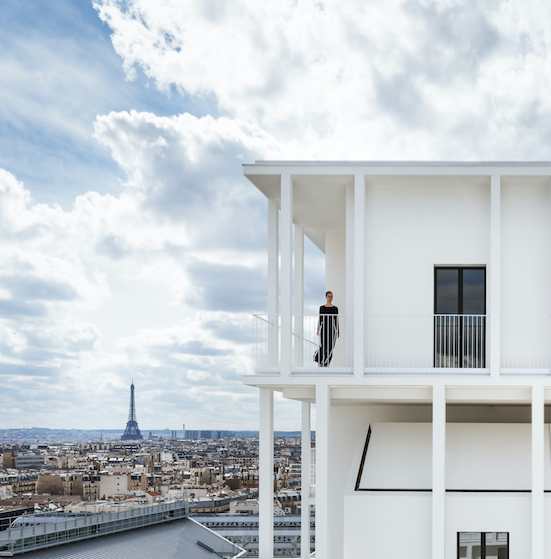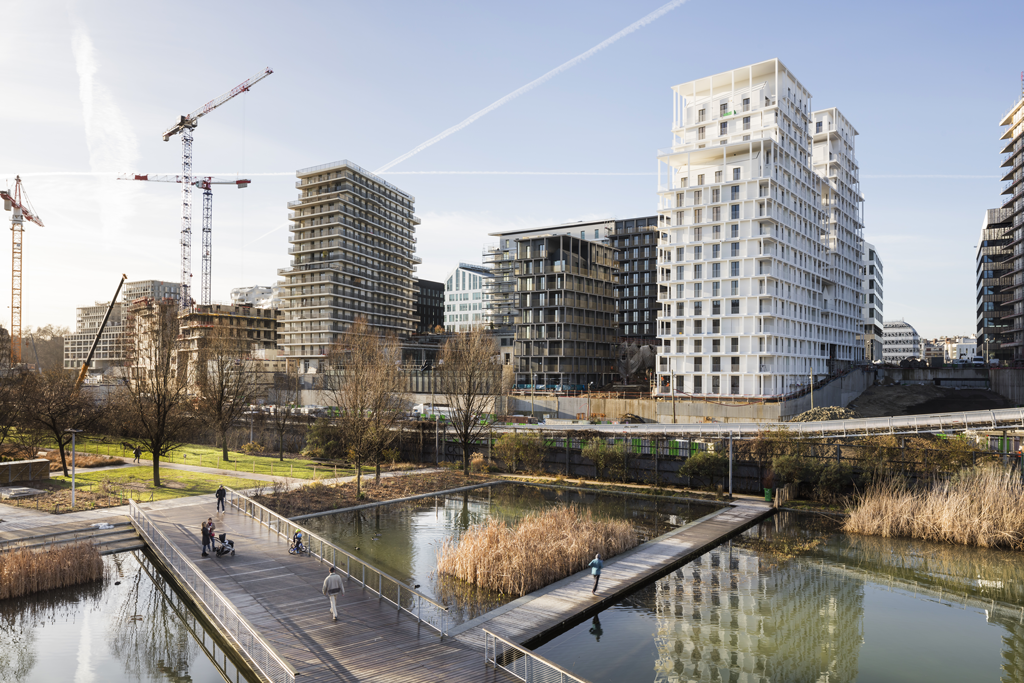Arles, Luma effect
This article by Christophe Catsaros was originally published in AA’s 428th issue – Private commissions, public intentions – released in December 2018.
Erected at the entrance to the city of Arles, on the site of a former railway maintenance centre, Frank Gehry’s new tower, commissioned by Maja Hoffmann for the Luma Foundation, is meant to be seen. It heralds the beginning of a new definition of the role of patron in the area’s cultural life.
It’s a funny kind of building – formally complex but lacking the expressive flight of the imagination that made the Californian starchitect’s name. It’s as though, by trying to curb his passion, Frank Gehry was denying his own plastic language. What remains is a destructured, hybrid glass and metal tower, in contrast with the stone buildings and horizontal character of the southern town.
Absence of clarity in the intention seems to be the defining feature of the Luma project as a whole. Why place a building of this size in a town of 50,000 inhabitants? Should the new foundation be considered a public sector matter, as statements from local officials tend to suggest (communist mayor Hervé Schiavetti has openly voiced his admiration for the Hoffmann family’s generosity), as well as the hopes it brings to the local population? Or should it rather be viewed as a strictly private enterprise?
In Arles, neither the fundamental choices at the origin of the project, nor the latter’s position in relation to the existing environment attest to a common strategy between the local council and the patroness. Luma develops autonomously, responding to an individual vision and strategy, certain of its success. With the Luma Foundation, which is partially operational until planned completion in 2020, Maja Hoffmann is inscribing the names of her children Lucas and Marina into the future, as well as that of a line of patrons whose wealth is linked to the pharmaceutical giant Roche. Breaking with the erstwhile characteristic discretion of the family’s contribution to the town for several generations, she is parachuting in a real war machine. Gehry is actually open about drawing inspiration from the military industry for the envelope of the building, notably the metallic foam panels that protect Humvee vehicles.
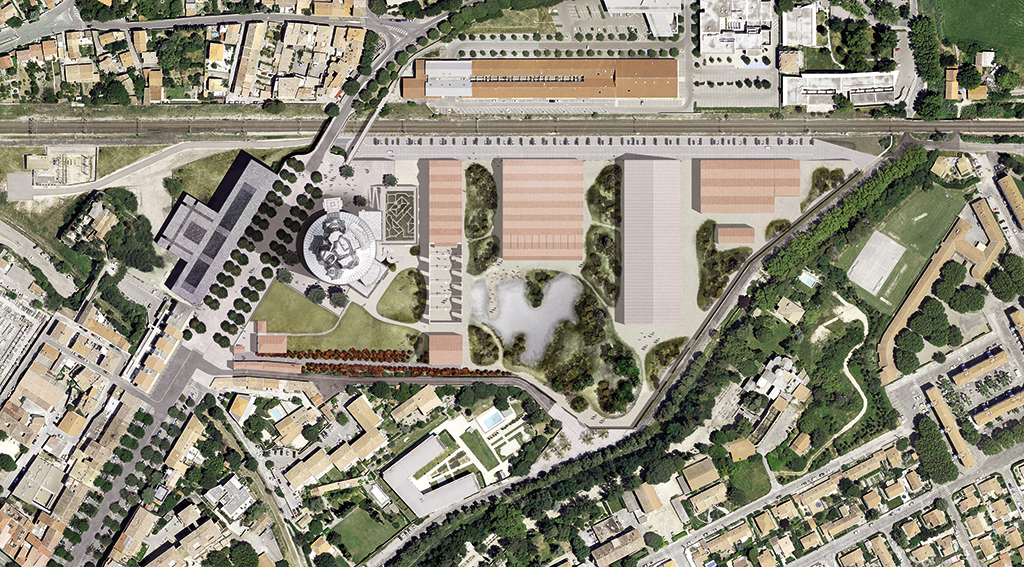
With her building worming its way into the destiny of a town with real development potential and facing significant unemployment concerns (15% compared with the 9% national average), Maja Hoffmann is at ease with her role, capable as she is to impact the whole conurbation. Her statement on the site of the Foundation serves as words of wisdom and a motto for the project: “The spirit of our project is to ensure that it strengthens the artistic, cultural, ecological, social and economic fabric of Arles and the Camargues, in the Rhone delta of the Mediterranean, through a continuous exchange and connection with the changing world.”
To place the future of a town in the hands of private sector players is no longer taboo. How to energise Arles and turn it, ultimately, into the ‘Venice of Provence’? How to revitalise this sleepy little town, which the Arles Photographic Meetings shake out of its torpor three month a year? The tried and tested formula is to have a starchitect build a flagship institution that will create a new destination on the globalised map of luxury tourism and contemporary art. Between Tel Aviv and Miami, Basel and Hong Kong, Arles will soon be a new point of reference. And who is better qualified for this repositioning than he whose famous Bilbao museum has become synonymous with the regeneration of an urban area on the decline? Frank Gehry also represents a sign; a name that sets the tone. The real estate market believes it and is awaiting new buyers to upgrade the town to business class.
Apart from a landscaped park designed by Bas Smets and a converted railway hall by Selldorf Architects, the Hoffmann project comprises several real estate investments in the historical quarter, including two heritage buildings rehabilitated into hotels: the Cloître and the Arlatan. Korean artist Lee Ufan also believes in the transformation and is following in Maja Hoffmann’s footsteps, by setting up a contemporary art foundation designed by Tadao Ando in the centre of town. The State believes in it in its own way and is contributing by setting up, right next to the Gehry tower, the brand new school of photography, equipped with a beautiful Miesian canopy designed by Marc Barani and essentially relying on an underground layout. In other words, faced with the imposing shape of a global culture, the State lowers its eyes and retreats underground.

The accursed share
Luma follows in the steps of Vuitton or Lafayette… one prestigious project after another, short-circuiting the intrinsic link that exists between the State and cultural policy. It’s a little as though, without daring to call into question a respected doctrine, the State was striving to slowly implement an alternative model: a reform that doesn’t speak its name. The face-off between the Luma Foundation and the new school of photography could in itself symbolise the victory of the new doctrine over principles, which, from philosopher André Malraux to Culture Minister Jack Lang, have shaped public cultural strategies over the course of the second half of the twentieth century. Culture had a pedagogical and unifying role in society, and the State was its main purveyor.
Although no one has dared to openly object to this mission yet, the old system seems to be permanently blocked. In July 2017, in Versailles, the French President quoted Georges Bataille’s ’accursed share’. Isn’t this ‘accursed share’, that constitutes a surplus, what must be squandered, spent gratuitously in order to enable the general, material and symbolic economy to continue to work, incarnated today by our cultural system? Let’s just say that it’s preferable to leave those who have it – money – to sacrifice theirs. Maja Hoffmann is welcome to replace the State in its role of great priest leading the ceremonies of symbolic expenditure meant to purge us from the economy’s excess.
Faced with the imposing shape of a global culture, the State lowers its eyes and retreats underground.
Admittedly, Luma has little to do with the scandalous operation of tax exemptions led by the Louis Vuitton Foundation. Maja Hoffmann has bought the land and presented a perfectly reasonable budget for a project of this scope: 150 million euros. Fair play as this may be, her uninhibited way of correlating economic development and cultural action doesn’t prevent her from being a decisive vector in the financialisation of art.
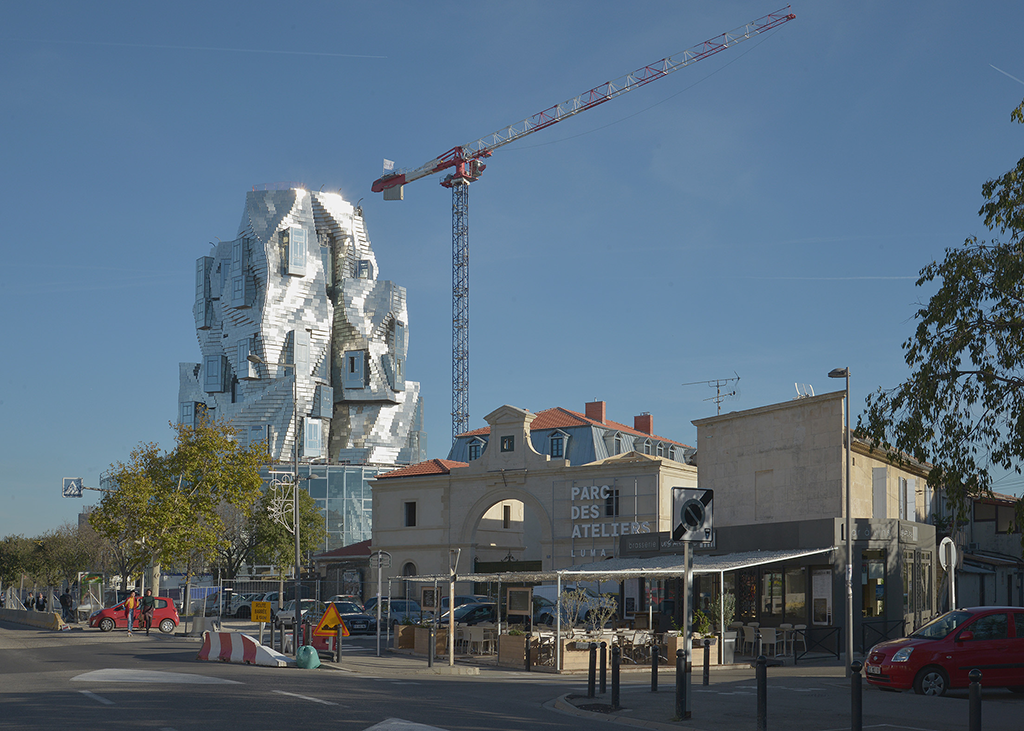
Back on the streets of Arles, the quaint shop fronts from the 1970s are slowly giving way to more prestigious brands. Although deluxe retail isn’t there yet, it won’t be long before it comes. The sudden rise in property prices in the last five years is undeniable. Prices have doubled Faced with the imposing shape of a global culture, the State lowers its eyes and retreats underground. from 1,000 to 2,000 euros per square metre or more in some cases. A heritage official who wished to remain anonymous goes even further by suggesting we take a walk around the Roquette, the central district, historically populated by working classes. Today, it’s building site upon building site, and the former inhabitants give way to buyers who transform old houses into second homes. The area is restored, to be sure, but more and more uninhabited.
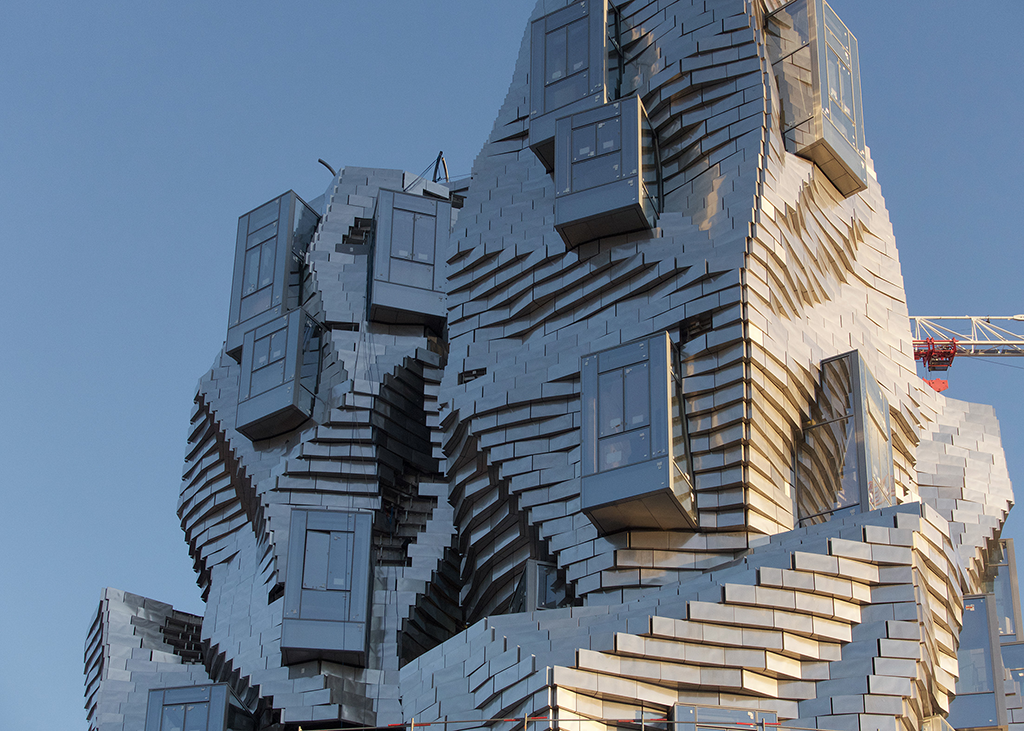
What is the point of questioning the hope that Arles may soon be inscribed in the constellation of high places of contemporary art? Of course, an ageing Gehry didn’t produce the most beautiful example of what he could have achieved, and the building evoking the half-disfigured face of Arnold Schwarzenegger in Terminator ostensibly displays its hybrid character and its non-finiteness. To say that Maja Hoffmann has monopolised a role that belongs to the State is one thing. Yet within the wider context of the budget for culture being reduced, to most people this initiative makes for excellent news. In Arles, transformed for the occasion into a gigantic game of SimCity, everything seems to be self-evident. Contemporary art, like any other lucrative activity, is settling in a region hoping to make a profit from it.
—
AA’s 428th issue – Private commissions, public intentions – is available on our online store.
—


